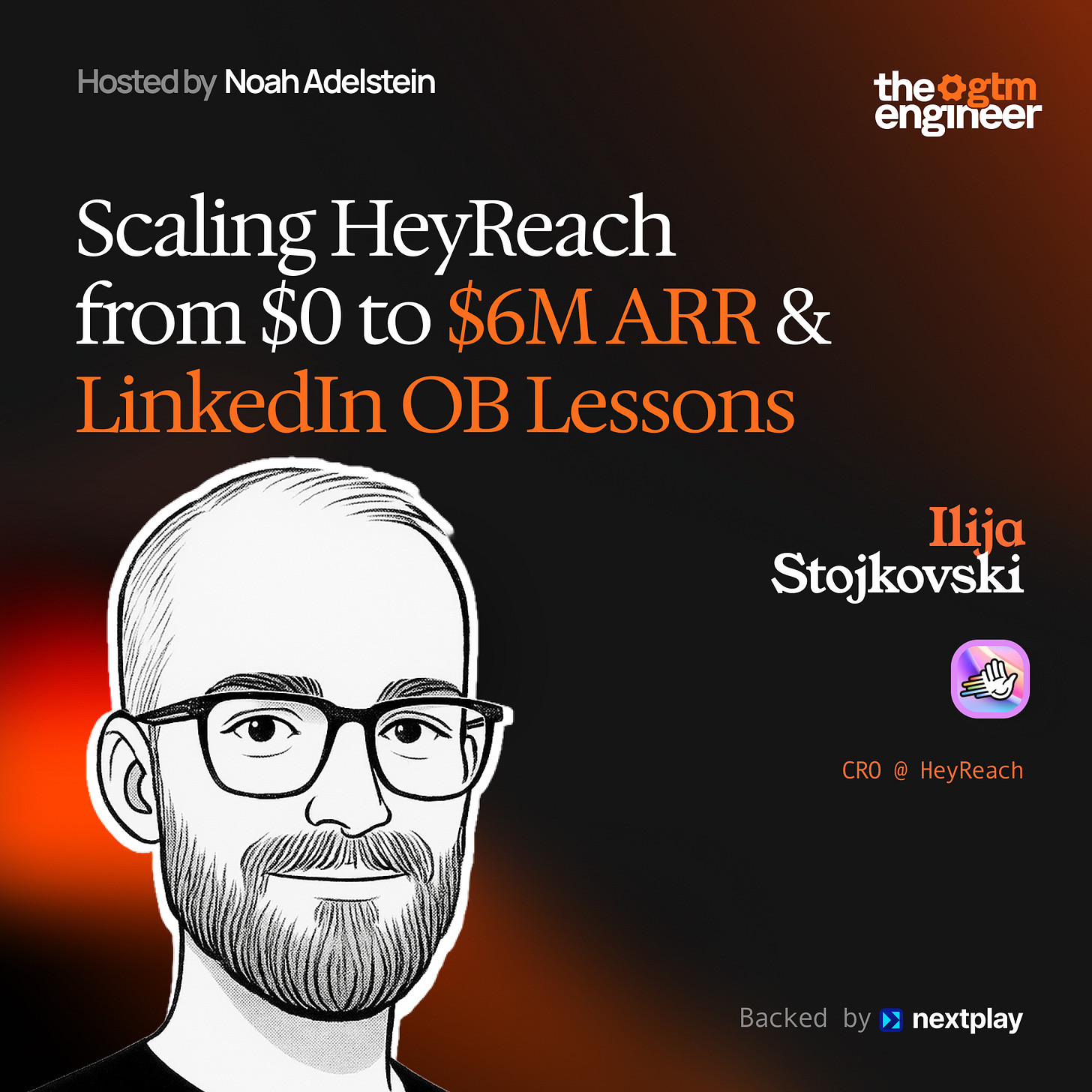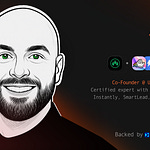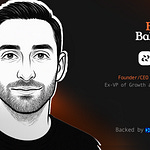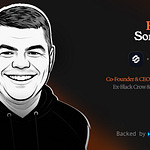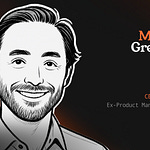Ilija Stojkovski is the Chief Revenue Officer at HeyReach, one of the leading LinkedIn automation platforms that has grown from zero to $6M ARR in just two years. As the company's sole salesperson when he joined, Ilija ran 1,800 demos in 14 months, while helping transform HeyReach from a tiny startup into a platform that powers LinkedIn campaigns for some of the best companies in the world.
Ilija joined in 2021 when the company was still a Reddit automation tool. After pivoting to LinkedIn automation, HeyReach's multi-account capabilities became a massive competitive advantage when LinkedIn restricted connection request limits. In this conversation, Ilija talks in depth about HeyReach’s growth - from pricing strategy and referral partnerships to what he learned across 1,800 sales calls. He also talks about LinkedIn outbound best practices based on 3 million connection requests of learnings as well as what he looks for in a GTM Engineer.
In this podcast, we discuss:
Why HeyReach's multi-account capabilities became a competitive advantage when LinkedIn implemented connection request restrictions
How experimentation informed HeyReach’s pricing model
Building referral partnerships at scale with LinkedIn account vendors and integrations
Tracking closed lost reasons to inform the product roadmap
Learnings from running 8-9 sales calls per day for 14 months straight
Why personalization isn’t the most important thing for LinkedIn campaigns
Why business intuition is far more important than toolset skills for GTM engineers
Episode highlights:
HeyReach’s first revenue spike came from a bit of luck — when LinkedIn clamped down on connection request limits per profile. Their second spike was more intentional, when HeyReach ran hard at selling into agencies.
LinkedIn account vendors were charging clients per account, but HeyReach offered them unlimited accounts for a flat fee – letting them increase their margins, and, in turn, giving HeyReach a GTM flywheel.
Ilija systematically tracked every closed lost reason and ranked them by revenue impact, which he fed directly to product development. They built white-labeling, API access, and webhooks in one quarter, helping quickly grow revenue with the most critical features.
After running hundreds of demos, Ilija realized, "it's not about what you offer, it's about what they need" and shifted from showcasing features to understanding current challenges. This approach led to shorter, more effective demos.
To qualify the flood of free trial signups, Ilija hired GTM Engineers to build an enrichment system using Clay that analyzed company websites, founding dates, services offered, and target ICPs.
By analyzing 3 million connection requests, HeyReach discovered that the requests without messages saw a 27% acceptance rate compared to 22% with personalized messages.
When hiring GTM engineers, Ilija found most candidates could learn GTM tools but lacked business logic to understand what the company actually needed. He emphasizes that learning technical skills like Clay takes much less time than building business intuition.
Where to find Ilija:
Transcript details:
(00:00) Intro
(03:37) Ilija's background and journey to HeyReach
(06:22) What HeyReach does and how it works
(09:18) HeyReach’s market analysis and early-traction building
(14:19) How HeyReach experimented to determine their pricing
(16:23) Building referral partnerships with LinkedIn agencies and AI account vendors & tracking closed lost reasons
(22:57) Deciding whether to test paid channels
(23:55) Using Clay to qualify and target top free trial signups
(28:34) Learnings from running 1800
(30:26) Understanding and selling to GTM professionals
(34:17) LinkedIn's future and why automation tools aren't going away
(39:10) Best practices for LinkedIn outreach and connection requests
(47:27) Why over-personalization is less important than focusing on relevance
(48:58) Defining GTM engineers and the importance of business logic
(51:00) How to build business intuition as a GTM engineer
(53:09) Advice for companies hiring GTM engineers
(54:42) Prediction for future of GTM engineering, underrated tools, and conclusion
For inquiries about sponsoring the podcast and to recommend any guests, email noah@thegtmengineer.ai



